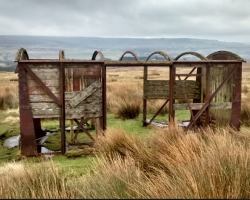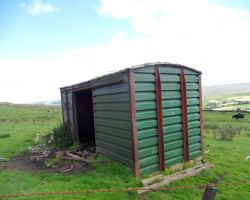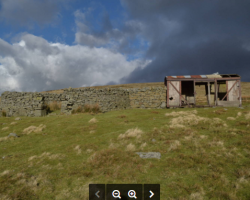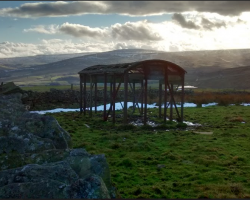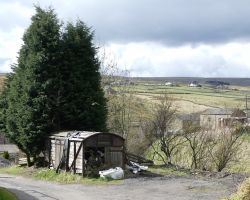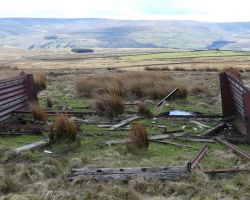Old decaying railway cattle trucks are a common sight around the fells of the North Pennines. This article attempts to explain how and why they got there in the context of the UK’s hill farming and meat transportation systems.
The movement of meat on the hoof across Merrie England by drovers from farming areas to urban markets started around 1400 and there were, for instance, droving routes through Stanhope and Wolsingham which ran down from Scotland to the big animal markets in Darlington and York. Then the arrival of the railways allowed the UK’s farmers to send their animals quickly to market in London and other cities in purpose built rail wagons when they had reached prime condition, to obtain the best prices. Long distance droving quickly declined and cattle and sheep droving became confined to shorter journeys from farm to local market, and then on to the railway station.
So from 1840 the transportation of live farm animals was big business for the UK’s new railways and at the height of the trade at the beginning of the 1930s over 2,000 stations in the UK had pens to hold cattle and sheep on their way to market, slaughter or for fattening up in the south of England.
Then, from the 1930s, there was a switch to shipping fresh killed meat in refrigerated rail vehicles and the cattle trucks started to be sold off. The cattle trucks which still remained in service in the early 1960s were sold off when the whole of the meat trade, live and carcass, switched to road transport.
Traditionally, Weardale and other hill farmers had taken winter feed up to sheep on the fells using a horse and sledge, as even the early tractors stood no chance of moving through snow which could sometimes be 10 foot deep. Purchasing the cattle trucks being sold off by British Rail, which could be dragged up on to the fells, gave Weardale farmers cheap storage for winter sheep feed, which could be taken up to the cattle trucks in the summer months and thrown out to the sheep in winter.
The cattle trucks fell out of use for winter feed storage with the onset of milder winters in the 1980s which enabled the heavier tractors and all-terrain vehicles then available to access the fells with winter feed.
Nowadays Natural England call the tune to the upland farmers of Weardale and their tune is to keep livestock off the fells in winter to prevent over grazing, to protect blanket bog and to re-wild the hills. So few sheep now over winter on the fells, the majority being either kept in the inbyre or shipped off the hills to low lying areas near Durham etc.
Our thanks to Maurice Oxley of Rookhope for help in writing this article
